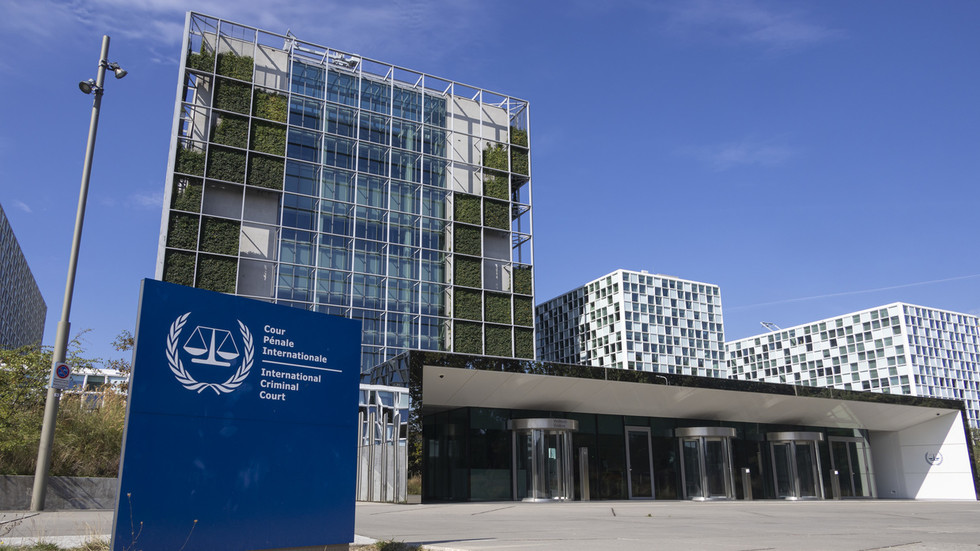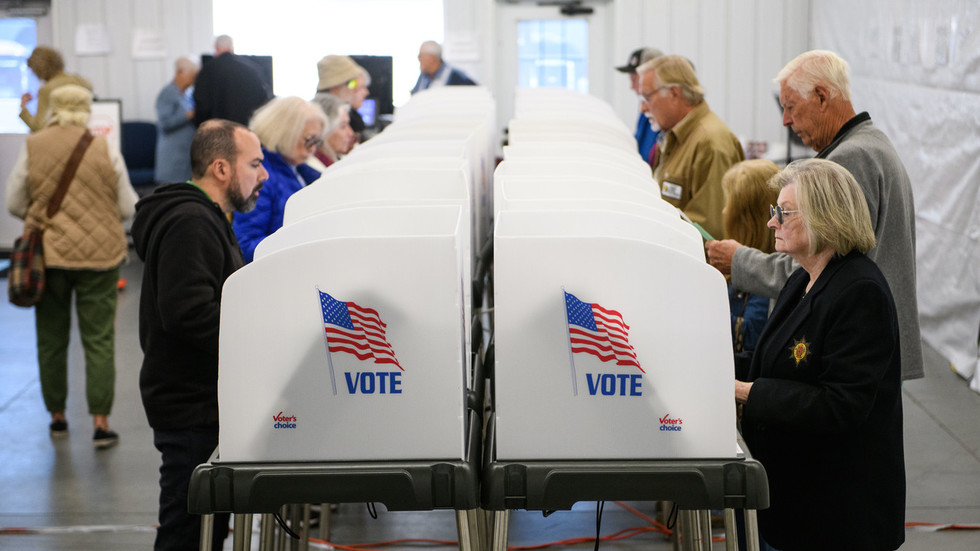Taichung, Taiwan – When Li Wei took over the running of his father’s glass-making business in northern China’s Cangzhou in 2020, he immediately set about optimising the firm’s operations.
Li moved Hebei Yiyue Glass Products’ sole factory from its city location to a site outside Cangzhou, providing better access to important road networks and more space to expand the facility.
At the same time, Li changed the primary focus of the company from selling glass components to customers in China to exporting finished glass products to customers abroad.
Today, he oversees a successful export business that sells cups, pots and jars throughout the world and employs twice as many workers as when he took over.
Much of Li’s success is owed to the demand for his products in the United States, which in recent years has been the destination for as much as 80 percent of his company’s exports.
But now, Li and his colleagues are concerned that their success could all come crashing down if former US President Donald Trump is re-elected to the White House on November 5.
Trump, who is running neck and neck with Vice President Kamala Harris in a race that is too close to call, has floated plans for tariffs of 60 percent or more on all goods heading to the US from China.
Economists have dubbed Trump’s plans “Tariff War 2.0”, after the Republican imposed tariffs as high as 25 percent on a range of Chinese goods during his first term in office, prompting Beijing to announce its own tariffs in turn.
“Such a large increase in tariffs by the United States will definitely have a great impact on me and my business,” Li told Al Jazeera.
“It will result in our products not being competitive, and at the very least our sales in the US will drop sharply.”
 Former US President Donald Trump gestures after speaking at a campaign rally in Green Bay, Wisconsin on October 30 [Julia Demaree Nikhinson/AP]
Former US President Donald Trump gestures after speaking at a campaign rally in Green Bay, Wisconsin on October 30 [Julia Demaree Nikhinson/AP]Since Trump’s announcement, Li has been working 12-hour days to identify other export destinations that could offset a downturn in his US business.
So far, he has not been able to find a substitute for the world’s largest market.
“I’m very busy trying to find solutions, but some days the situation feels terrible,” he said. “Often, I don’t like to think about it.”
Gary Ng, a senior economist with investment bank Natixis in Hong Kong, said that Chinese exporters have serious cause for concern if Trump re-enters the White House and follows through on his plans.
“With tariff rates at 60 percent, many Chinese manufacturers would no longer be competitive or able to turn a profit from their exports to the US market,” Ng told Al Jazeera.
“For the Chinese companies that are particularly exposed to the US market, this would be problematic, and they could face a lot of pressure.”
Among exporters already feeling the pressure is Sotech, a producer of advanced electronic components based in Shanghai, according to company sales manager Dong Sion.
“I was shocked,” Dong told Al Jazeera, referring to the moment she first heard about Trump’s proposals.
More than 90 percent of Sotech’s products, which include smart glasses, are exported overseas, with about 30 percent of those exports going to the US.
“If 60 percent tariffs are imposed then it could disrupt our US business or even end it completely,” Dong said.
“And we would be forced to cut staff.”
For some Chinese companies, additional tariffs could prove to be the fatal blow at a time of already challenging conditions in the world’s second-largest economy, said Allan Von Mehren, chief analyst and China economist at Danske Bank.
“It would have big repercussions in China,” Von Mehren told Al Jazeera.
The US is by far the top destination for China’s exports, taking in more than $400bn worth of its goods each year.
With so much trade at risk, UBS has estimated that imposing a 60 percent tariff, on top of existing tariffs, would lower China’s gross domestic product (GDP) growth by 2.5 percentage points over the next 12 months.
Such a hit would come at an inopportune time for the world’s second-largest economy.
An ailing property sector, low consumer confidence and household spending well below the global average are all weighing on growth, while the country’s traditional investment-fuelled, export-led development model is struggling to pick up the slack.
Facing such headwinds, Chinese authorities are widely seen as unlikely to hit the government’s growth target of about 5 percent – a challenge that will only get harder if Chinese exporters lose US market access due to new tariffs.
![Hebei Yiyue Glass Products’ factory in Cangzhou, Hebei, China [Courtesy of Hebei Yiyue Glass Products]](https://www.aljazeera.com/wp-content/uploads/2024/10/IMG-20241030-WA0002-1730357055.jpg?w=770&resize=770%2C513) Hebei Yiyue Glass Products’ factory [Courtesy of Hebei Yiyue Glass Products]
Hebei Yiyue Glass Products’ factory [Courtesy of Hebei Yiyue Glass Products]Lily Wang, a recent university graduate who works at Li Wei’s glass-making company outside Cangzhou, said she is afraid that new tariffs combined with the poor state of the Chinese economy will lead to a surge in unemployed workers and worsening working conditions for those who are employed.
“Chinese employers are cutting a lot of things already, and if trade with the US declines, I’m worried that it will get even worse,” Wang told Al Jazeera.
The actual damage to the Chinese economy from the tariffs is likely to depend on companies’ ability to adapt, Ng said.
“Some companies might try to diversify their export structure or move their production to other countries and then export to the US from there,” he said.
Some Chinese firms have already taken such measures.
At Hebei Cangzhou New Century International Trade, a construction materials company in Hebei province that sends about 40 percent of its exports to the US, the management is considering teaming up with manufacturers in Indonesia.
“A 60 percent tariff rate cannot be covered by our export profits,” Vice President Lucy Zhang told Al Jazeera.
“So, we are looking into ways to indirectly export to the US instead.”
At the same time, the Chinese government has been working on nurturing new markets for Chinese exporters.
In September, Beijing hosted 50 African nations for the Forum on China-Africa Cooperation, which aimed to boost African imports of Chinese products, particularly solar panels and electric vehicles.
China is Africa’s biggest trading partner, as well as the leading trade partner of most South American nations.
“Beijing has known for a while now that relations with the US were not going to significantly improve any time soon and has tried to gain better access for its companies in countries where the bilateral relations are friendlier,” Von Mehren said.
Despite China expanding trade with friendlier nations, it is unclear whether a replacement exists for the vast volumes of Chinese goods going to the US.
In some cases, US restrictions on Chinese imports have been quickly emulated in other jurisdictions.
In May, US President Joe Biden’s administration announced that tariffs on Chinese electric vehicles would be raised to 100 percent, effectively shutting the door to the US market.
The European Union announced tariffs as high as 38.1 percent on Chinese EVs the following month.
Since then, Turkey and Canada have followed suit with similar measures.
“As some countries take actions against Chinese exports, a concern can quickly set in among other countries that a Chinese surplus will be dumped on their markets causing them to take action as well,” Von Mehren said.
 US President Joe Biden arrives to speak at a General Motors assembly plant in Detroit, Michigan on November 17, 2021 [Evan Vucci/AP]
US President Joe Biden arrives to speak at a General Motors assembly plant in Detroit, Michigan on November 17, 2021 [Evan Vucci/AP]Trump has also suggested he would impose steep tariffs on Mexico, where Chinese EV companies are considering building new production facilities to circumvent tariffs.
“All I’m doing is saying ‘I’ll put 200 or 500, I don’t care.’ I’ll put a number where they can’t sell one car,” Trump said earlier this month during an interview with Fox News.
China has responded to the various trade measures in kind, launching anti-dumping investigations into European pork and Canadian canola, for example, and imposing export controls on rare elements used in the production of semiconductors.
While directed at China, Trump’s tariff hikes would also likely be keenly felt in the US.
In an analysis published in September, the Peterson Institute for International Economics estimated that the measures would cause a 0.4 percent rise in inflation in 2025 and 0.23 percent loss in GDP by 2027.
The rise in inflation and GDP losses would double if Beijing retaliates, the think tank said.
Liu Pengyu, a spokesperson for the Chinese embassy in Washington, DC, said there would be no winners from a new trade war.
“Artificial restrictions or protectionism will only disrupt normal trade flows and the stability of the production and supply chain which serves the interests of no one,” Liu told Al Jazeera.
Back in Hebei, Li Wei struggles to see an upside for consumers or workers in Trump’s plans.
“But I don’t know – those in power do what they want,” he said.
“And the rest of us pay the price.”

 2 weeks ago
13
2 weeks ago
13








